Special Report
Countries Where the Most People Are Killed Defending the Environment
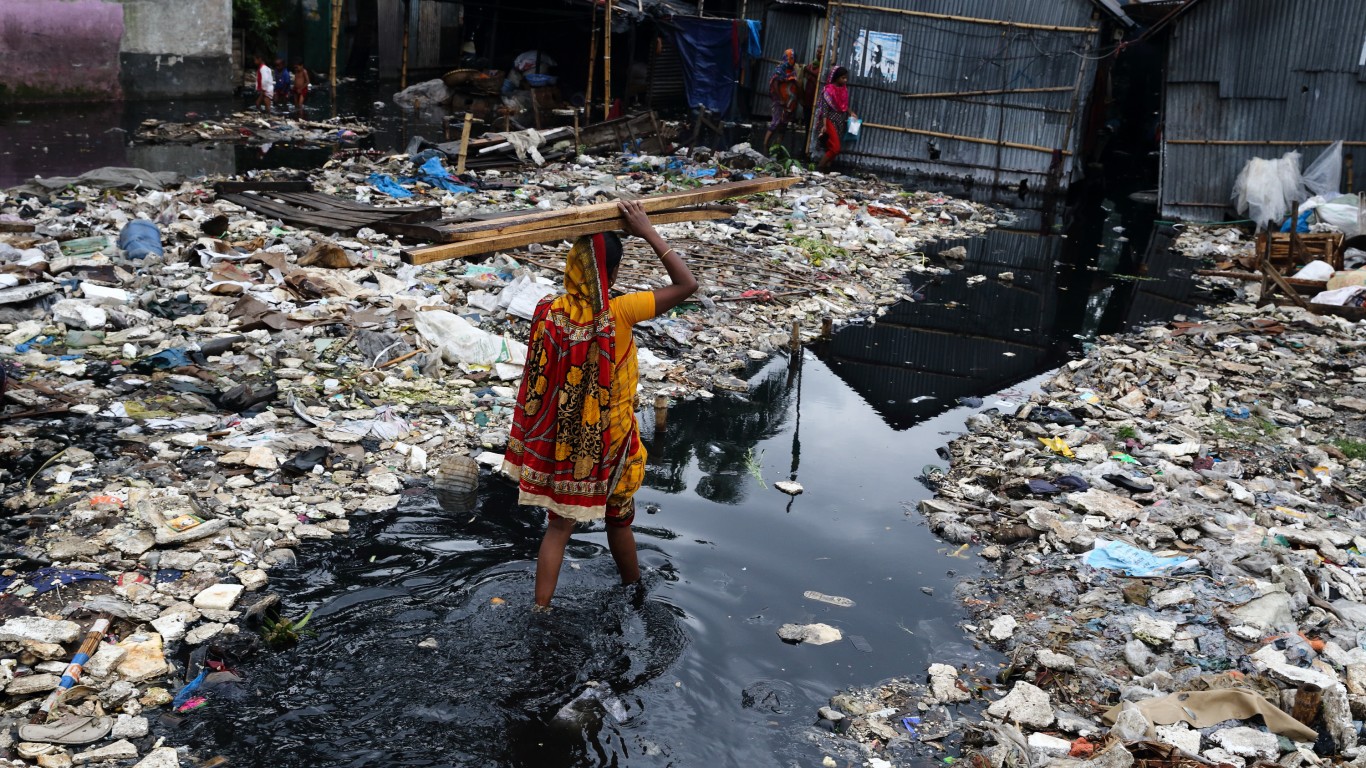
Published:

As the world comes to the realization of the profound damages human beings are causing to natural environments worldwide, groups across the globe have long been trying to protect the local land and environment. In some places, these struggles are not always peaceful, and last year alone, 200 people were murdered for their work defending the environment, according to a recent report. (Earth’s CO2 level rose every year since climate change became a national issue.)
In some countries around the globe there have been violent clashes over land use, pollution, hydroelectric and other projects, and the rights of indigenous people. Climate defenders in these areas fight multinational agribusiness that continually encroach on land not not theirs, wildlife poachers, and criminal gangs involved in illegal logging of pristine forests, to name a few.
To find the countries where the most people have died defending the climate, 24/7 Wall St. reviewed data on confirmed killings of land and environmental defenders around the world every year since 2012, published in the annual report by London-based non-governmental environmental justice organization Global Witness. Due to the difficulties of tracing every incident, these killings represent a massive undercount. We added population figures for the most recent year available from the World Bank.
Global Witness has recorded 1,733 murders of land and environmental defenders from 2012 to 2021. The report also sheds light on who is being killed, who is doing the killing, and what sectors are fueling the violence.
Of the 1,733 people confirmed to have been murdered for their activism in land use and environmental issues, 60% were either indigenous people, small-scale farmers, or both. An additional 13% of victims were park rangers or other government officials, journalists, or lawyers. The characteristics of the victims in about one in five of these murders are unknown.
Of those who committed these killings, about a third have been linked to armed forces, local police, or private military or security guards. About 27% of these perpetrators are categorized as hitmen or killers with links to local organized crime. The characteristics of about a third of these killers are unknown.
Mining and other related extraction activities was identified as the sector driver in 18% of these killings, while agribusiness, hydroelectric projects, and logging were the sector drivers in about one out of four of these murders. However, the sector drivers in half of these murders, 871, are unknown.
The most dangerous countries for environmental defenders are mostly located in Latin America. Seven of the 10 countries with the most confirmed murders of land and environment defenders are in this region. (Here are the countries facing the worst climate emergencies.)
Here are the countries where the most people have died in environmental activism.
30. Russia
> Named human rights defenders killed, 2012-2021: 4
> Most common perpetrator: Unspecified (3)
> Population: 143,446,060
According to a 2017 report from the Virginia-based environmental justice organization Crude Accountability, between 2011 and 2017, Russia “saw a series of killings and attempted killings and criminal prosecutions of environmentalists for their environmental activism.” In most cases, the perpetrators were never punished. Confirmed kills include journalist Mikhail Bekekov, the 55-year-old editor-in-chief of Khimkinskaya Pravda, who was beaten to death in 2013 for his paper’s opposition to razing a forest to make way for a federal highway.
[in-text-ad]
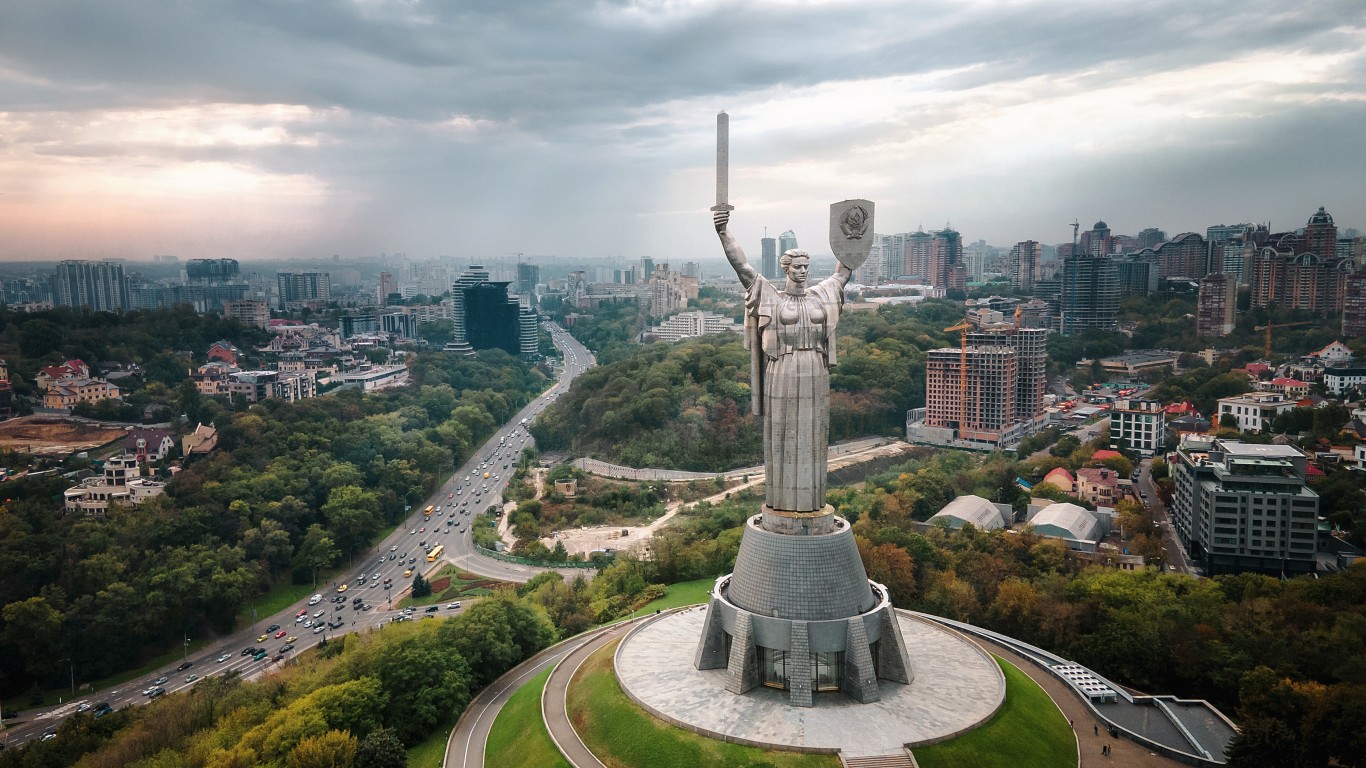
29. Ukraine
> Named human rights defenders killed, 2012-2021: 4
> Most common perpetrator: Unspecified (3)
> Population: 43,814,581
Russia’s invasion of Ukraine has hampered Ukrainians’ environmental movement as activists have been forced to set aside their environmental concerns for the more imminent threat of war. Before the war, at least four killings of eco-activists were recorded in Ukraine. These include the death of Mykola Bychkho, 23, who police say committed suicide but who is believed to have been killed by local authorities for his anti-corruption crusade in the town of Eshkar over the pollution of a local reservoir by a business linked to the town’s mayor.
28. Chile
> Named human rights defenders killed, 2012-2021: 4
> Most common perpetrator: Unspecified (2)
> Population: 19,212,362
Chile’s most prominent environmentalist movement is rooted in the ongoing conflict with the Mapuche, an indigenous group located in the south-central part of the South American country. Three of the four activists killed for opposing the construction of hydroelectric plants and logging were from the indigenous group. Among them is Macarena Valdéz, 32, who was found dead after receiving threats for her vocal opposition to hydroelectric projects. Police ruled the death a suicide, but an independent forensic investigation found she had been violently murdered.
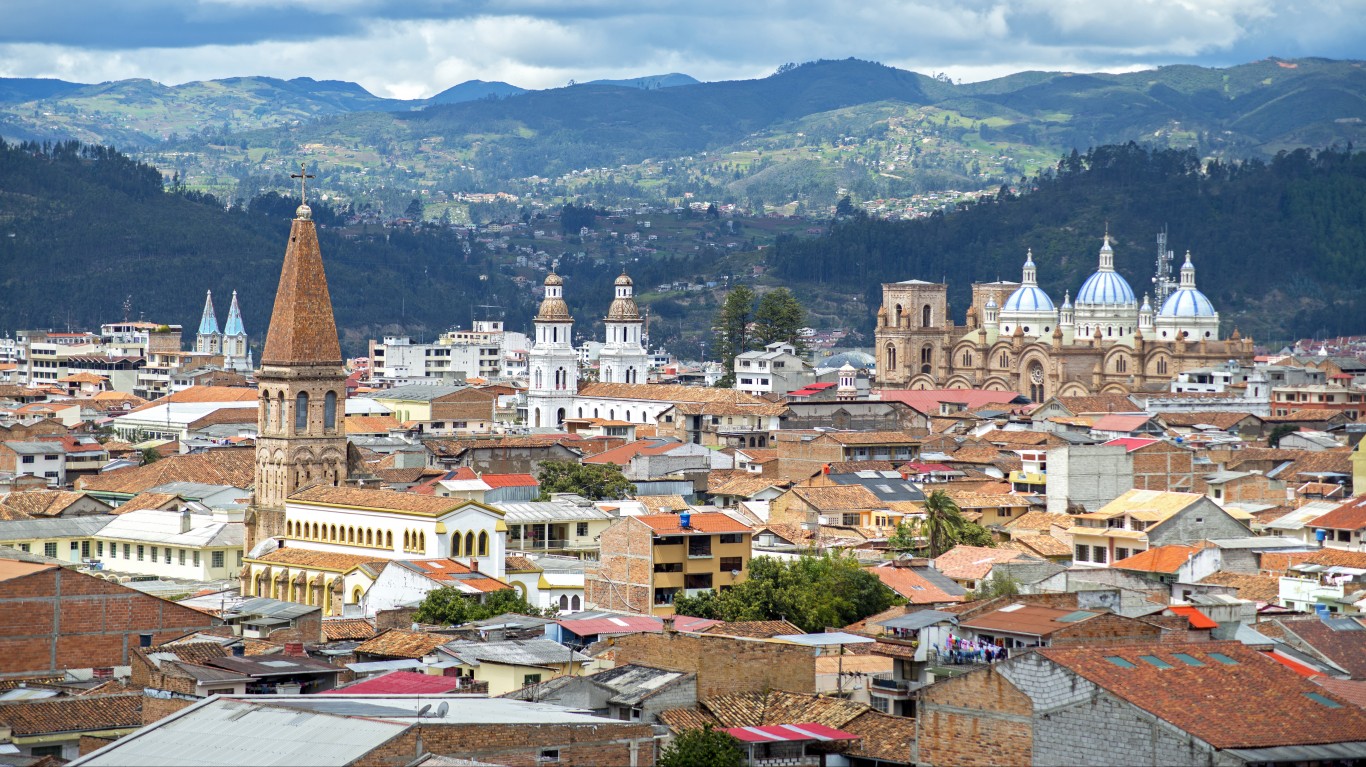
27. Ecuador
> Named human rights defenders killed, 2012-2021: 4
> Most common perpetrator: Unspecified (3)
> Population: 17,888,474
Ecuador’s Alliance for Human Rights identified 449 environmental activists had been subjected to threats, persecution, and assassinations from 2011 to 2021, and that the government either has failed to protect them or was directly responsible for some of the abuses. The murders of activists in this period of time include that of Nange Yeti, a 66-year-old leader from the Waorani Amazonian ethnic group, whose unsolved murdered last year is believed to have been linked to his environmental activism.
[in-text-ad-2]
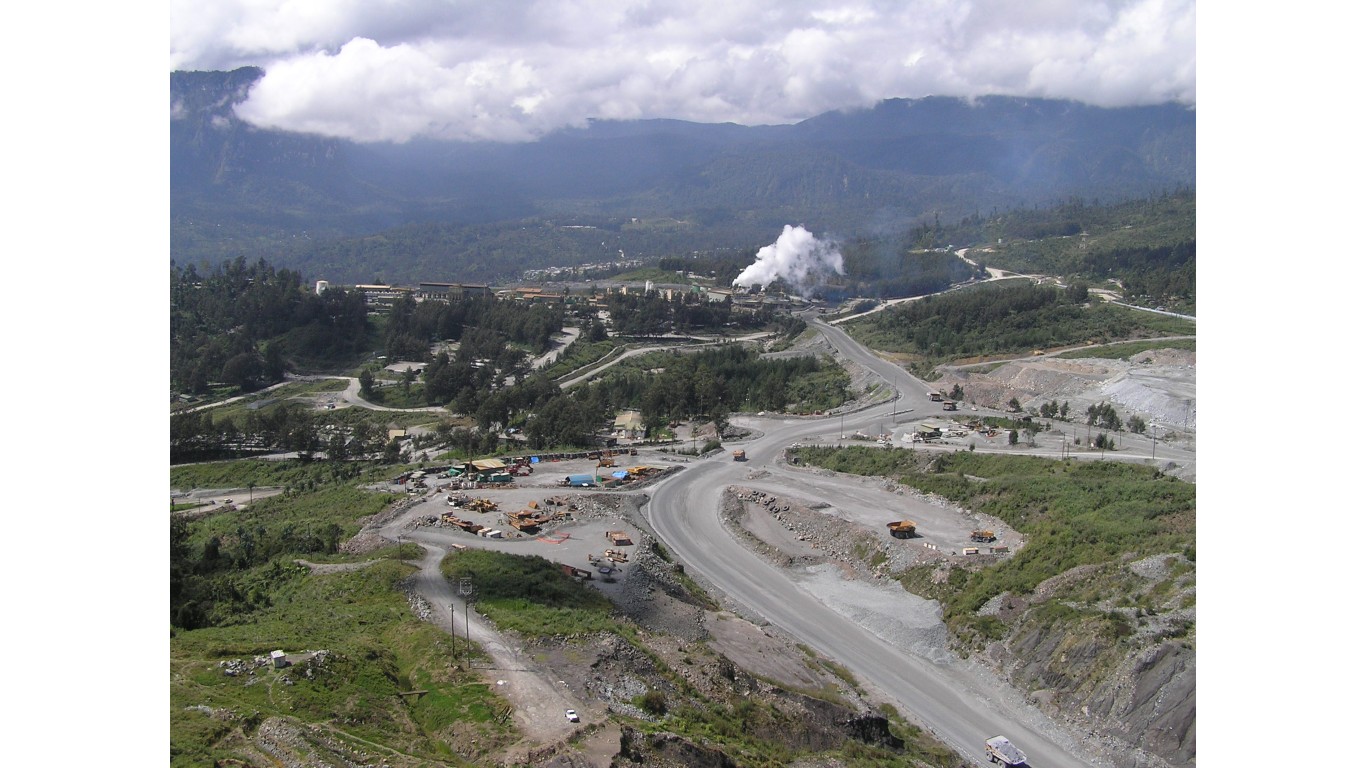
26. Papua New Guinea
> Named human rights defenders killed, 2012-2021: 4
> Most common perpetrator: Police (4)
> Population: 9,119,005
Four indigenous people were killed when police opened fire on about 800 demonstrators in the West Papuan capital of Jayapura. Though the identity of the victims is unclear, the Guardian identified one man killed during the crackdown as Matias Tenget, whose body was found in a nearby lake. West Papuans have for decades been pushing for independence from Indonesia. Gold mining in the area has polluted waterways while doing little for locals.

25. Costa Rica
> Named human rights defenders killed, 2012-2021: 4
> Most common perpetrator: Unspecified (2)
> Population: 5,139,053
Costa Rica has been embroiled in an ongoing conflict between indigenous people and the ranchers that have razed pristine forestland to make way for agricultural activities. Jhery Rivera, 45, from the Broran indigenous community, was murdered in the hamlet of Terraba after local activists claim a group of landowners intimidated and attacked indigenous squatters. In a separate incident, Diego Armando Saborío González, 28, was fatally shot for attempting to protect wild animals on his land from hunters.
[in-text-ad]

24. Pakistan
> Named human rights defenders killed, 2012-2021: 5
> Most common perpetrator: Poachers (2)
> Population: 225,199,929
The movement to protect marginalized, often indigenous, communities from the forces of landowners, foreign investors, corrupt politicians, and police, army, or other armed belligerents, overlaps with environmental activism. In Pakistan, the assassination of Zafar Lund, 55, exemplifies this tendency. Lund, a prominent human rights activist, was gunned down in front of his home by unidentified assailants, believed to be linked to his work protecting water rights. Other Pakistanis have died in recent years because of their efforts to fight illegal logging and poaching.
23. South Africa
> Named human rights defenders killed, 2012-2021: 5
> Most common perpetrator: Hitmen (3)
> Population: 60,041,996
Mining and poaching are two common targets of environmental activism in South Africa. Among people in the country who have paid the ultimate price for speaking out against mining is Sikhosiphi Rhadebe, 52, who was gunned down in front of his home in the town of Mbizana by two men dressed as police officers. It is believed his work opposing government-supported Australian mining operations in the scenic region of South Africa’s Wild Coast was the reason. Park rangers have also been killed for their work protecting the country’s wildlife from poachers.
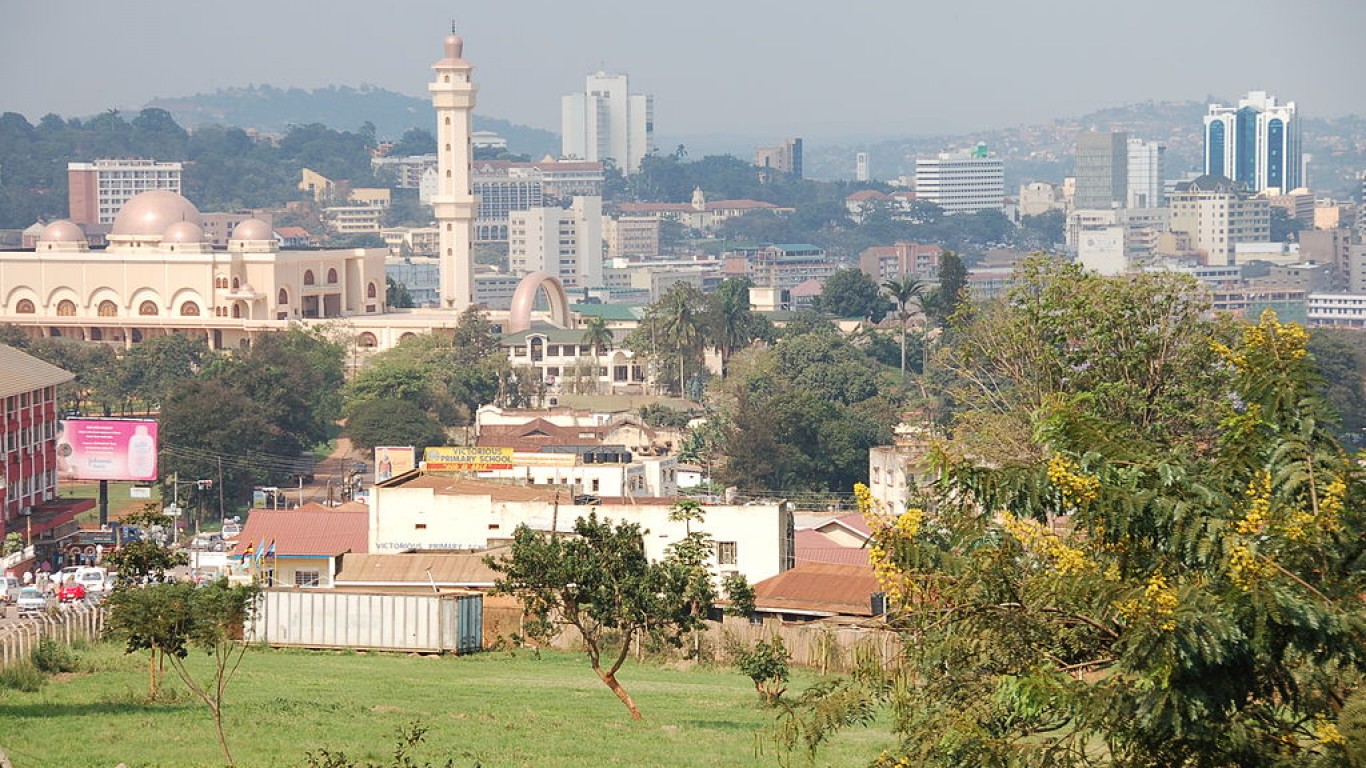
22. Uganda
> Named human rights defenders killed, 2012-2021: 5
> Most common perpetrator: Poachers (3)
> Population: 47,123,533
As with other African countries, environmental activists in Uganda have been targeting mining and poaching operations. Yunis Akumu and her husband Enock Darakarim Buchali were burned to death for their involvement in a larger dispute over the leasing of land in the city of Hoima to U.S.-based oil waste management company. The company, McAlester Energy Resources, ceased operations in Uganda after a land deal with local interests displaced more than 200 families.
[in-text-ad-2]
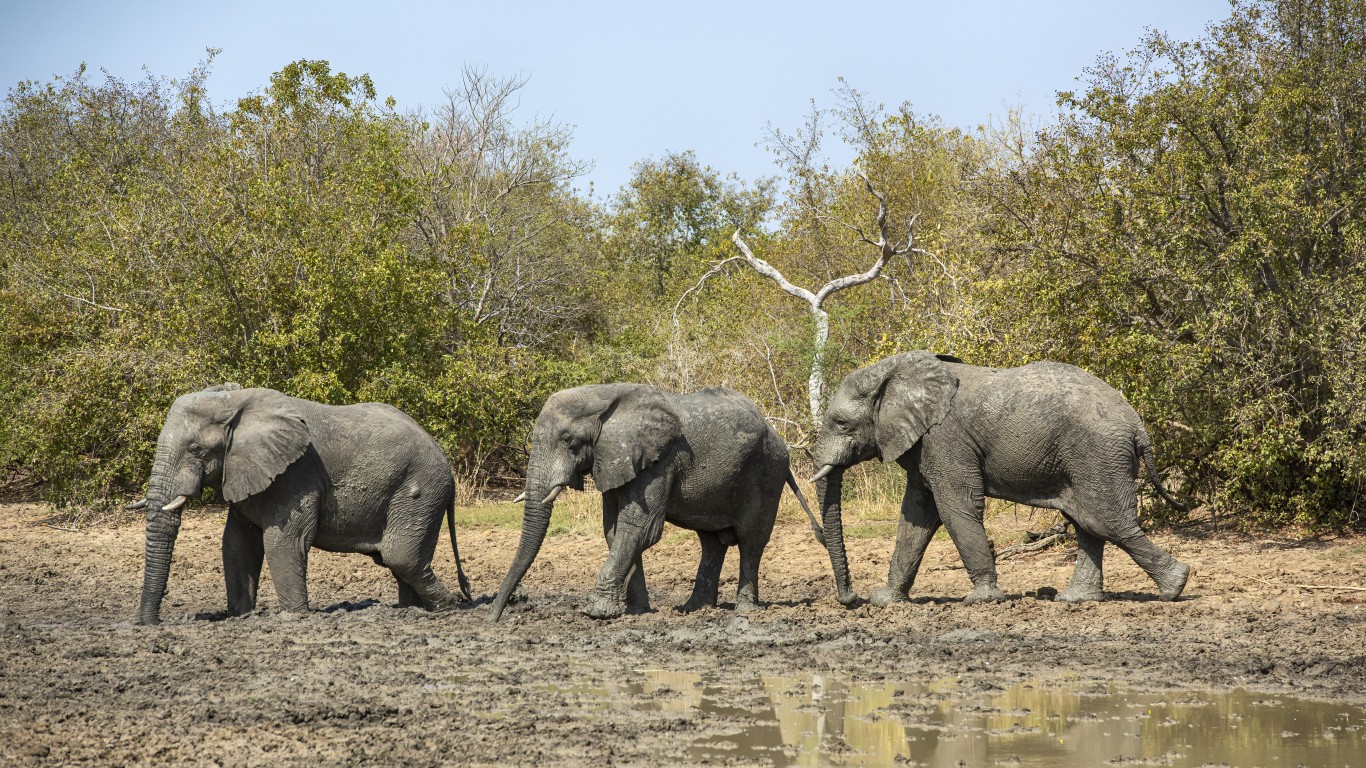
21. Chad
> Named human rights defenders killed, 2012-2021: 5
> Most common perpetrator: Unspecified (5)
> Population: 16,914,985
In many parts of Africa, working to protect endangered wildlife can be a dangerous job due to the amount of money poachers can earn from the illicit wildlife trade, particularly from wealthy Chinese and Vietnamese customers. On Sept. 3, 2012, five Chadian park rangers were massacred during dawn Islamic prayers near Zakouma National Park. The killings were linked to their work protecting the last elephant herds in the region.

20. Kenya
> Named human rights defenders killed, 2012-2021: 6
> Most common perpetrator: Poachers (2)
> Population: 54,985,702
Last year, 67-year-old prominent environmental activist Joannah Stutchbury was fatally shot several times in front of her home in the outskirts of Nairobi. Stutchbury had devoted much of her life trying to protect Kenya’s threatened forests. Other Kenya-based activists who sacrificed their lives fighting for land conservation include Jomo Nyanguti, killed by police in 2018 while confronting them regarding a dam-surveying project, and park rangers Duba Issa and Roba Duba who were murdered by poachers in 2017.
[in-text-ad]

19. Bangladesh
> Named human rights defenders killed, 2012-2021: 7
> Most common perpetrator: Police (7)
> Population: 166,303,494
In 2016, three men from the Santal indigenous tribe were killed in clashes with police and workers of a local sugar mill after Santals were evicted from the land to make room for agribusiness expansion. Earlier that same year, four farmers were gunned down by police while protesting the Chinese-backed construction of the coal-fueled energy projects. The country faces an energy shortage, but locals who are directly affected by these projects have pushed back, arguing these plants will destroy the local environments upon which they depend.

18. Argentina
> Named human rights defenders killed, 2012-2021: 7
> Most common perpetrator: Police (4)
> Population: 45,808,747
As in neighboring Chile, there is an ongoing dispute between indigenous Mapuche and private interests that seek to take their lands for financial gains. Among activists that have been killed speaking for indigenous rights against land developers is Miguel Galván, 40, who was stabbed to death at his home in 2012, about a year after another member of a local small-farm rights movement was shot and killed in his home.

17. Myanmar
> Named human rights defenders killed, 2012-2021: 8
> Most common perpetrator: Unspecified (3)
> Population: 54,806,014
In many parts of the world, journalists are often targets for their work covering environmental degradation, including in Myanmar, where Soe More Tun was beaten to death in a 2016 murder believed to be linked to his work covering illegal logging and timber smuggling. Others that have been killed for their actions against environmentally damaging activities in the police state include Loong Harm, a 54-year-old farmer who was fatally shot. Harm was part of a group monitoring local mining operations.
[in-text-ad-2]
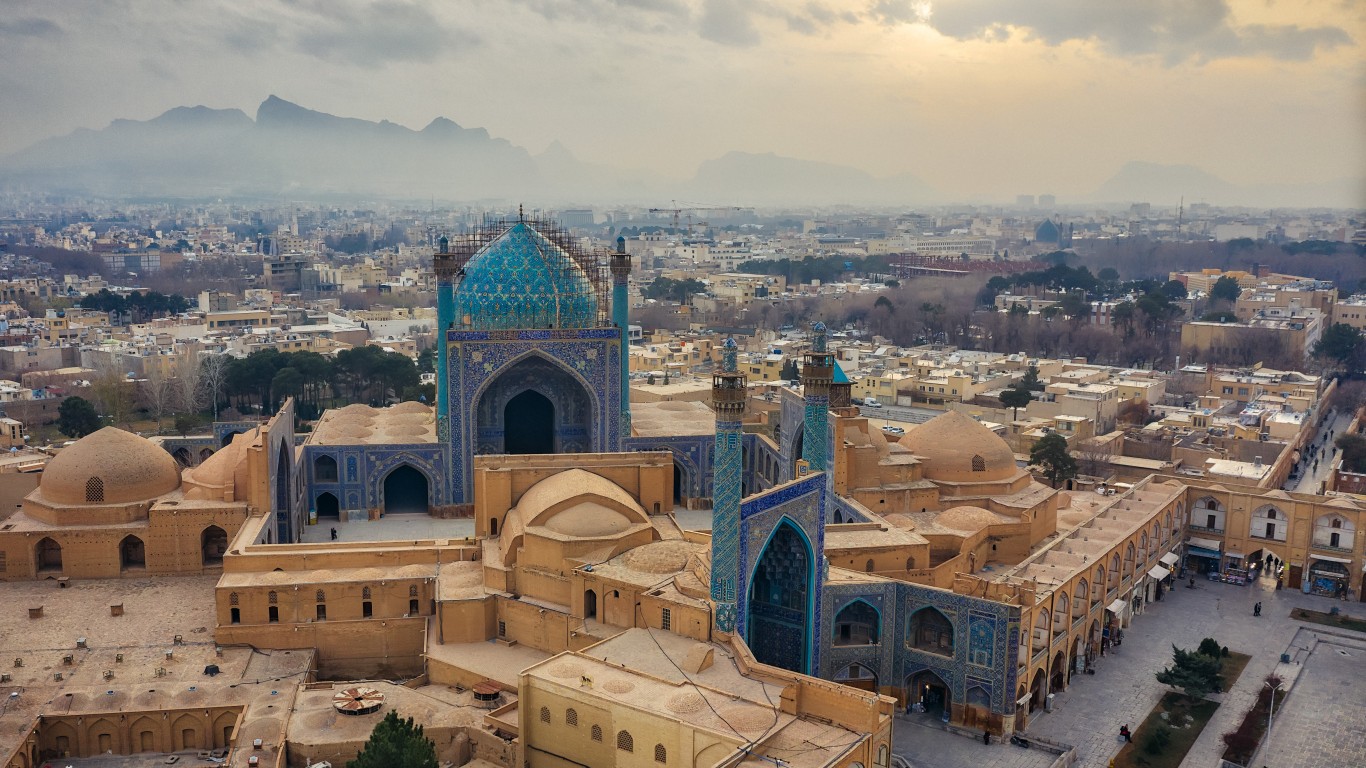
16. Iran
> Named human rights defenders killed, 2012-2021: 9
> Most common perpetrator: Armed forces (4)
> Population: 85,028,760
In 2018, four Iranian park rangers died fighting wildfires in the country’s western province of Kordestan. In this instance, there were no illicit actors in their deaths. But in at least five other instances between 2012 and 2019, Iranians were murdered for their activism, including Kavous Seyed-Emami, 63, a prominent environmentalist who was arrested on accusations of being a western spy and who, according to the authorities who detained him, committed suicide in his prison cell. In 2016, three park rangers were murdered by poachers in Iran’s Geno Biosphere Reserve.

15. Cambodia
> Named human rights defenders killed, 2012-2021: 10
> Most common perpetrator: Armed forces (5)
> Population: 16,946,446
Amnesty International has identified illegal logging as a threat to the human rights of Cambodia’s indigenous peoples. Land use demonstrations can turn fatal, as they did in 2012, when Heng Chantha, a teenage girl, was killed in clashes between villagers and security forces over the development of a rubber plantation. In another incident, two military officers were arrested and charged in 2018 for their alleged involvement in the killing of an environmentalist and two forest rangers who were reportedly photographing illegal logging activity.
[in-text-ad]
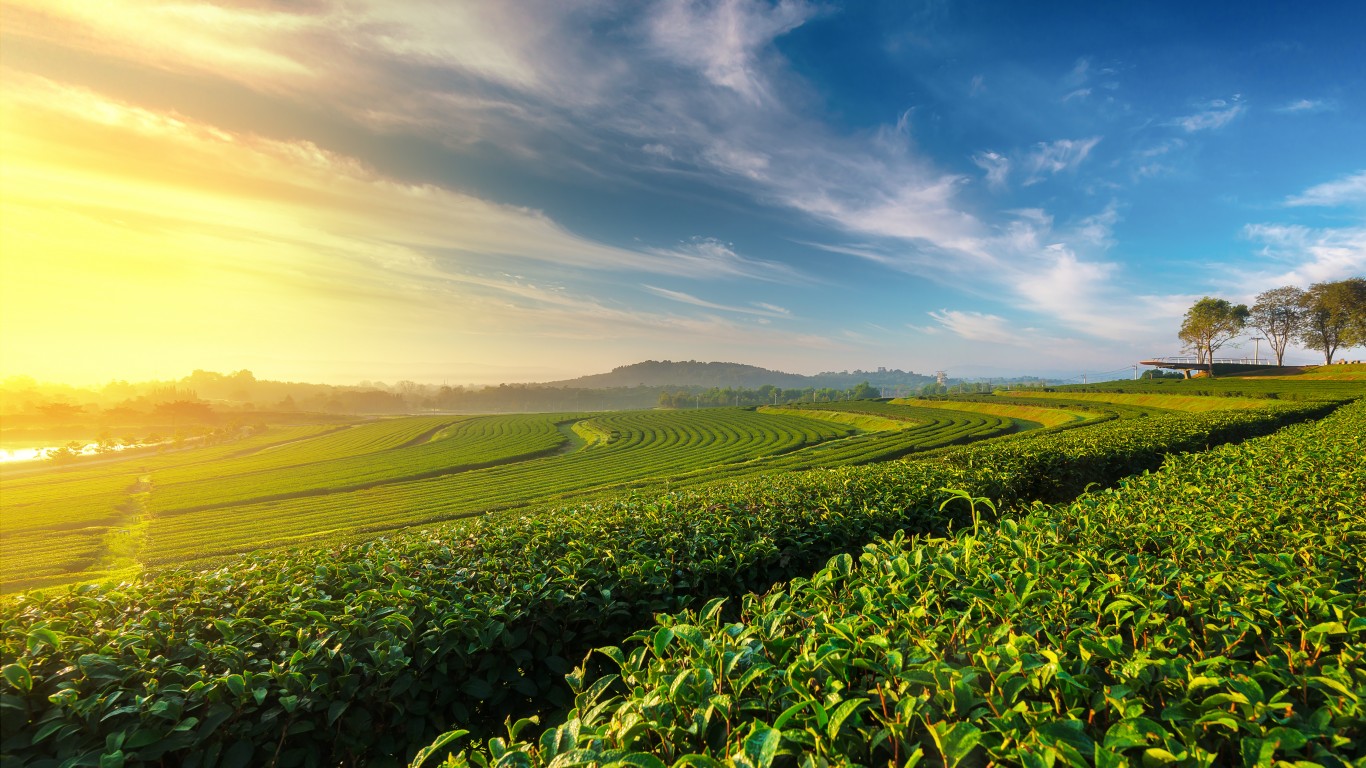
14. Thailand
> Named human rights defenders killed, 2012-2021: 13
> Most common perpetrator: Unspecified (6)
> Population: 69,950,844
Conflicts over agricultural and mining expansions into environmentally and culturally sensitive areas and opposition to wildlife poachers are major causes of fatalities of Thai climate defenders. Among the victims was Den Khamlae, 65, a land-right defender, who vanished and is believed to be dead amid an ongoing conflict over a forestry project in Thailand’s Chaiyaphum province. Another victim is Likhit Somboon, 45, a park ranger who was shot dead near his residence for his work protecting wildlife from poachers in a sanctuary in Chonburi province.
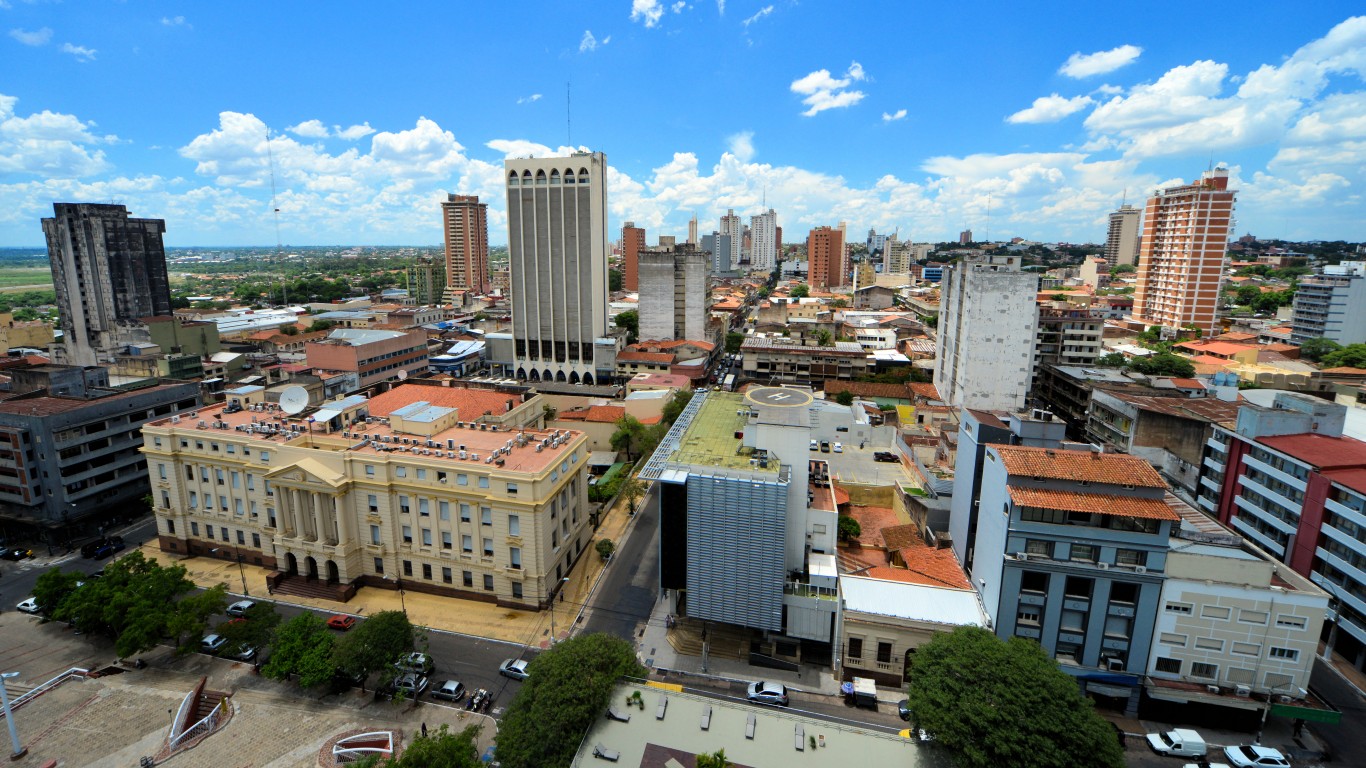
13. Paraguay
> Named human rights defenders killed, 2012-2021: 13
> Most common perpetrator: Police (9)
> Population: 7,219,641
Nine farmers in eastern Paraguay were among those killed in clashes with police in 2012. Police had come to evict about 100 “tent people” (a local term for squatters) from land owned by a local businessman and politician, whom activists say had illegally acquired the public land. Encroachment of private enterprise on lands occupied by poor rural people is a main source of conflict in Paraguay. Deaths in recent years include Pablo Medina Velázquez, 53, a reporter covering the use of toxic pesticides who was gunned down in Curuguaty in 2014 along with his 19-year-old assistant, Antonia Maribel Almada.

12. Indonesia
> Named human rights defenders killed, 2012-2021: 14
> Most common perpetrator: Private security guards (4)
> Population: 276,361,788
The fatal stabbings of farmers Putra Bakti, 32, and Aman Suyryadi, 34, in Indonesia’s South Sumatra province in 2020 underscores the ongoing conflicts between local communities and land developers in the world’s fourth most populous country. The two men were murdered, allegedly by security guards employed by oil palm plantation, when villagers challenged their eviction by the company. Several other deaths of Indonesian activists and journalists have occurred in recent years involving conflicts between locals and encroaching agribusiness operations.
[in-text-ad-2]

11. Venezuela
> Named human rights defenders killed, 2012-2021: 17
> Most common perpetrator: Armed forces (8)
> Population: 28,704,947
Conflicts involving campesino groups and mining and agrarian operations leading to evictions is a primary source of fatal conflicts over land use in Venezuela. In 2018, land use activists and farmers who occupied idle land — Orlando Reyes Parra, Pedro Vielma, and Ramón Rosario — were kidnapped and murdered by hitmen allegedly linked to the previous landowner. Many of these killings target indigenous activists in the country’s interior.
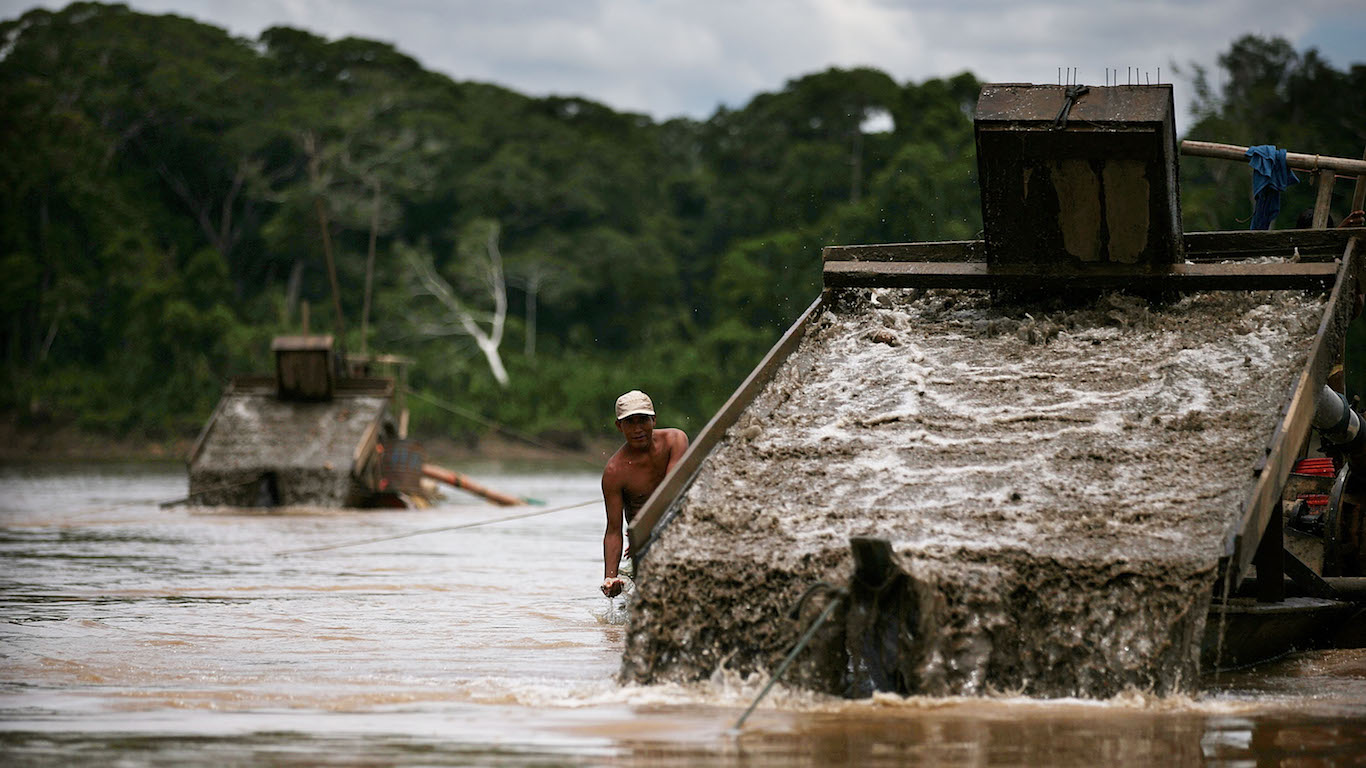
10. Peru
> Named human rights defenders killed, 2012-2021: 51
> Most common perpetrator: Police (23)
> Population: 33,359,416
“Indigenous people are the front-line witnesses of climate change and development pressures in the Peruvian Amazon,” the World Wildlife Federation wrote in 2014. Indeed, many of the people who have been killed in Peru are small-scale farmers and/or indigenous Peruvians pushing back against logging, mining, and other land use activities. Last year, at least seven Peruvian indigenous activists were killed, including Herasmo García Grau and Yenes Ríos Bonsano of the Cacataibo ethnic group, who were murdered for denouncing drug trafficking activities in their area.
[in-text-ad]

9. Nicaragua
> Named human rights defenders killed, 2012-2021: 57
> Most common perpetrator: Unspecified (29)
> Population: 6,702,379
Nicaragua is among seven Latin American countries that rank among the 10 most violent countries for human rights and climate activists. Of particular concern is conflicts over land use and ownership. The most fatal incident occurred on Aug. 23, 2021, when at least 13 members of the Mayagna and Miskito communities in the Bosawás Biosphere Reserve on the Caribbean coast were massacred. According to activists, the perpetrators were non-indigenous settlers with alleged ties to organized crime surrounding illegal logging activities.

8. Democratic Republic of Congo
> Named human rights defenders killed, 2012-2021: 70
> Most common perpetrator: Private military actors (39)
> Population: 92,377,986
Democratic Republic of Congo is wracked with so much violence linked to the illicit wildlife trade that the central African country of 92 million is one of three countries outside of Latin America to rank among the 10 most violent for activists. In January 2021, armed hitmen murdered six park rangers between the ages of 25 and 48 in an ambush in Virunga National Park, a mountain gorilla sanctuary where militias fight to control land and natural resources in the area.
7. India
> Named human rights defenders killed, 2012-2021: 79
> Most common perpetrator: Police (35)
> Population: 1,393,409,033
The world’s second most populated country is among the top 10 countries with the highest number of reported killings of activists, including environmental defenders. In 2018, Ajit Maneshwar Naik, 57, was murdered in Dandeli, Karnataka state, an area notorious for crimes against environmental activists. Since 2020, small-scale farmers have protested legislative reforms they say put them at the mercy of large agribusiness, and many have paid the price for demonstrating.
[in-text-ad-2]
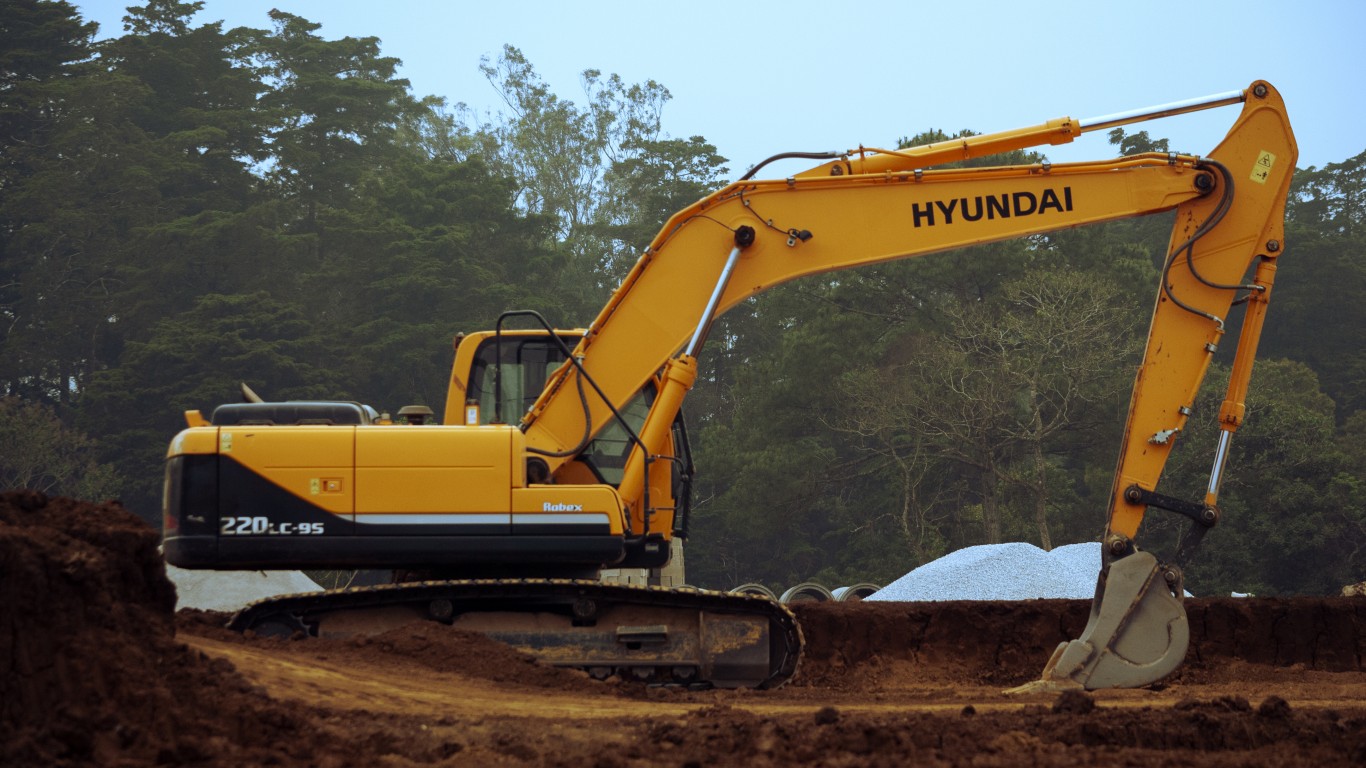
6. Guatemala
> Named human rights defenders killed, 2012-2021: 80
> Most common perpetrator: Unspecified (38)
> Population: 17,109,746
Out of the seven countries that have recorded the highest number of murdered activists, six are in Latin America. The killings of land and environmental defenders in Guatemala surged in 2018, as long-simmering tensions flared between mostly indigenous social right activists and groups associated with large landowners, mining operations, agribusiness, and illegal logging, including members of the armed forces, private security guards, or hitmen.
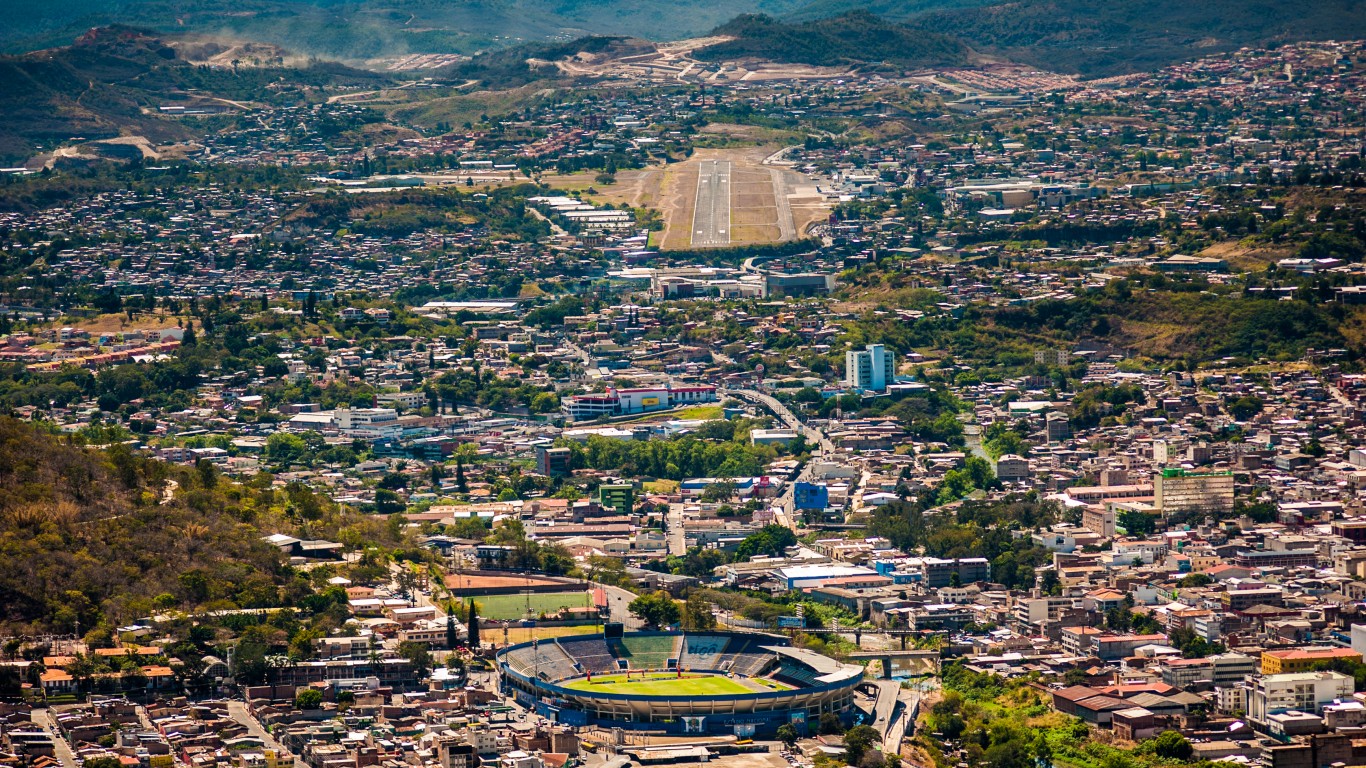
5. Honduras
> Named human rights defenders killed, 2012-2021: 117
> Most common perpetrator: Unspecified (66)
> Population: 10,062,994
Of the five countries that have recorded more than 100 murders of rights and environmental activists, four are located in Latin America, including Honduras, which has one of the world’s highest homicide rates. At least 123 land and environmental activists have been murdered since the country’s 2009 military coup d’état, many of whom were killed opposing mega-projects on their lands. Among victims of this violence last year were Carlos Cerros Escalante, a 41-year-old indigenous land-rights activist gunned down in the town of Nueva Grande.
[in-text-ad]
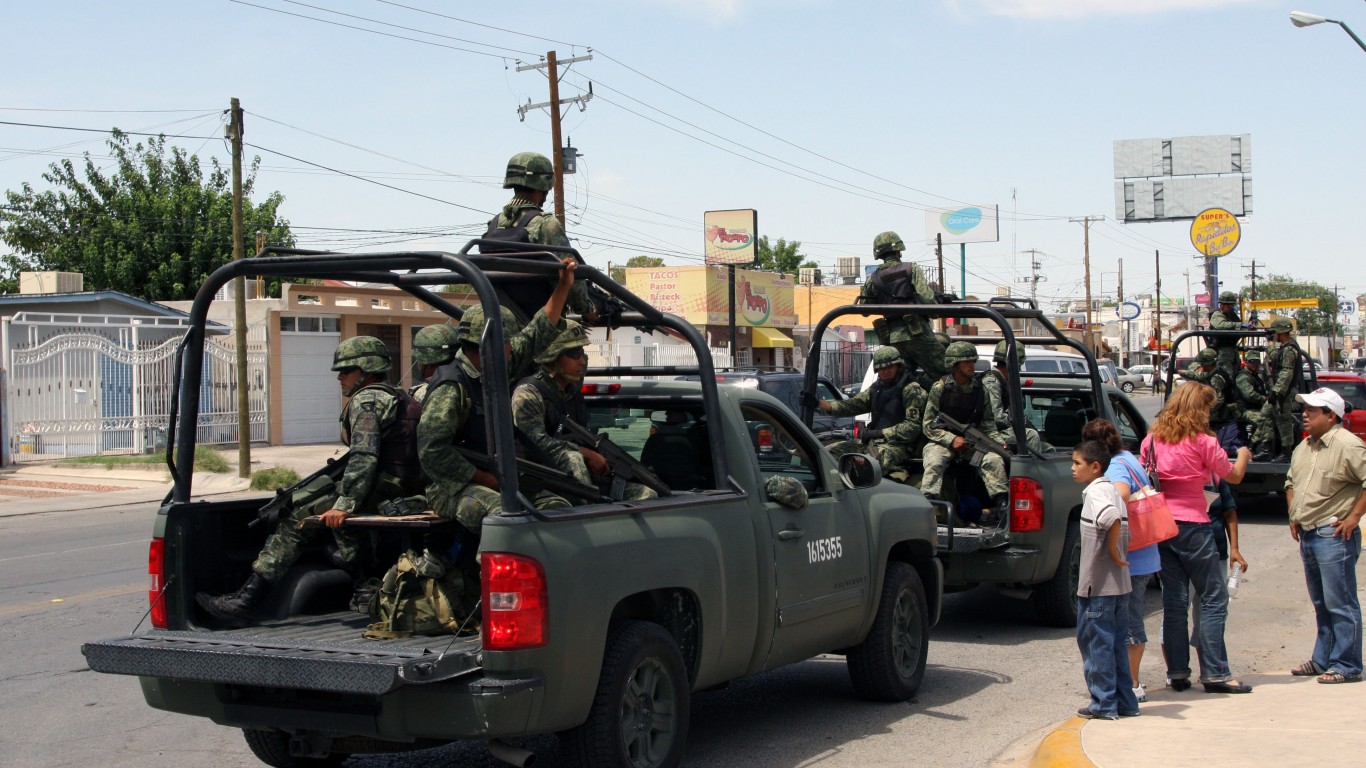
4. Mexico
> Named human rights defenders killed, 2012-2021: 154
> Most common perpetrator: Unspecified (64)
> Population: 130,262,220
Mexico, which ranks fourth based on the number of killings from 2012 to 2021, was the deadliest country for environmental activists in 2021 and named the deadliest by Global Witness. The reason is that these killings have been increasing recently. Last year, the country reported 54 murders linked to land and environmental rights efforts, double the number recorded that year in Brazil, the top-ranking country on this list and a significant increase from 30 murders in 2020 and 18 murders in 2019.
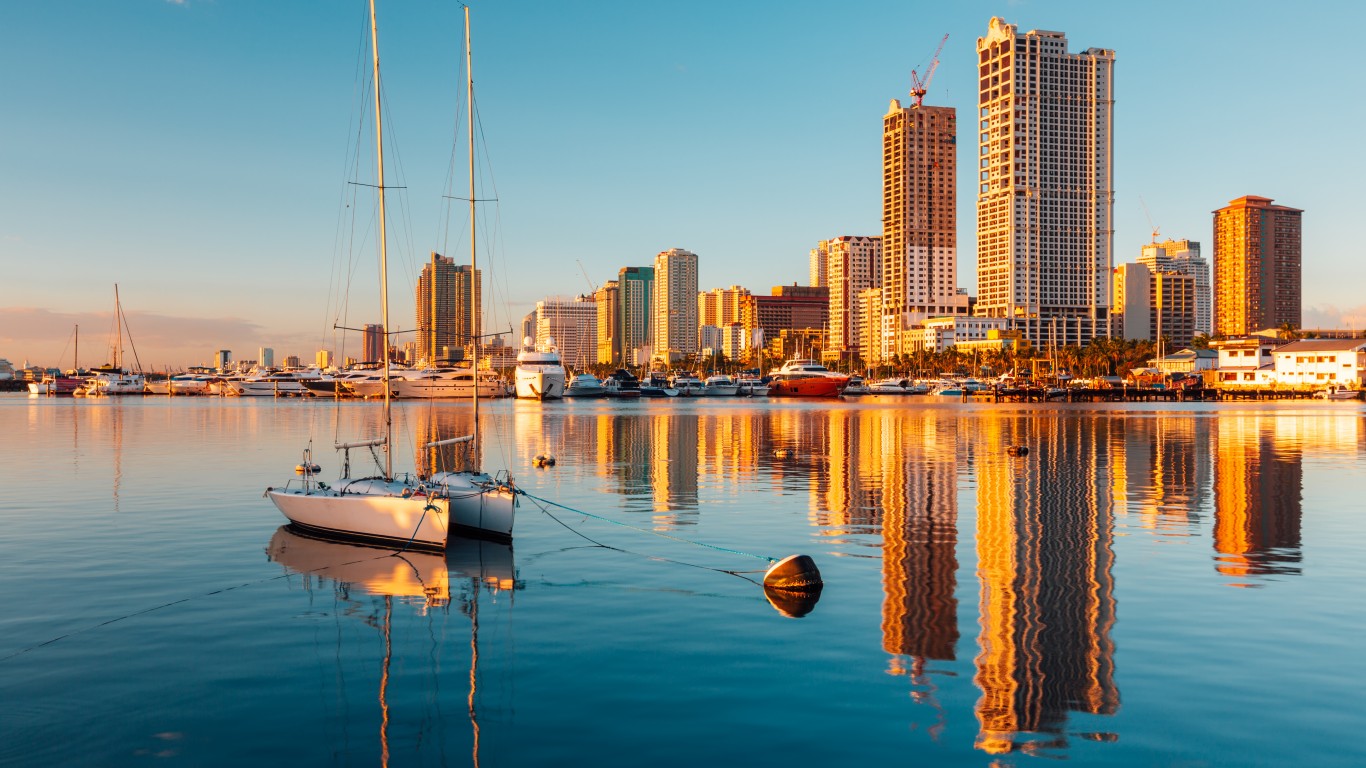
3. Philippines
> Named human rights defenders killed, 2012-2021: 270
> Most common perpetrator: Armed forces (99)
> Population: 111,046,910
The Philippines is the only country outside of Latin America to rank among the top five most dangerous for land and environmental activists. In 2018, it was the most dangerous, with 30 of the 164 reported killings of activists. The country confirmed 19 such killings last year, including the shooting death of chief Julie Catamin, a key witness in the defense of Tumandok tribe members who were detained and/or killed by police for their involvement in land rights advocacy.

2. Colombia
> Named human rights defenders killed, 2012-2021: 322
> Most common perpetrator: Private military actors (114)
> Population: 51,265,841
A rise in paramilitary groups threats and targeting of environmental activists who oppose fracking and other petroleum activities is one reason why Colombia is considered one of the most dangerous countries for land defenders. Last year, at least 33 people involved in indigenous and land use rights were killed by hitmen and private military actors.
[in-text-ad-2]
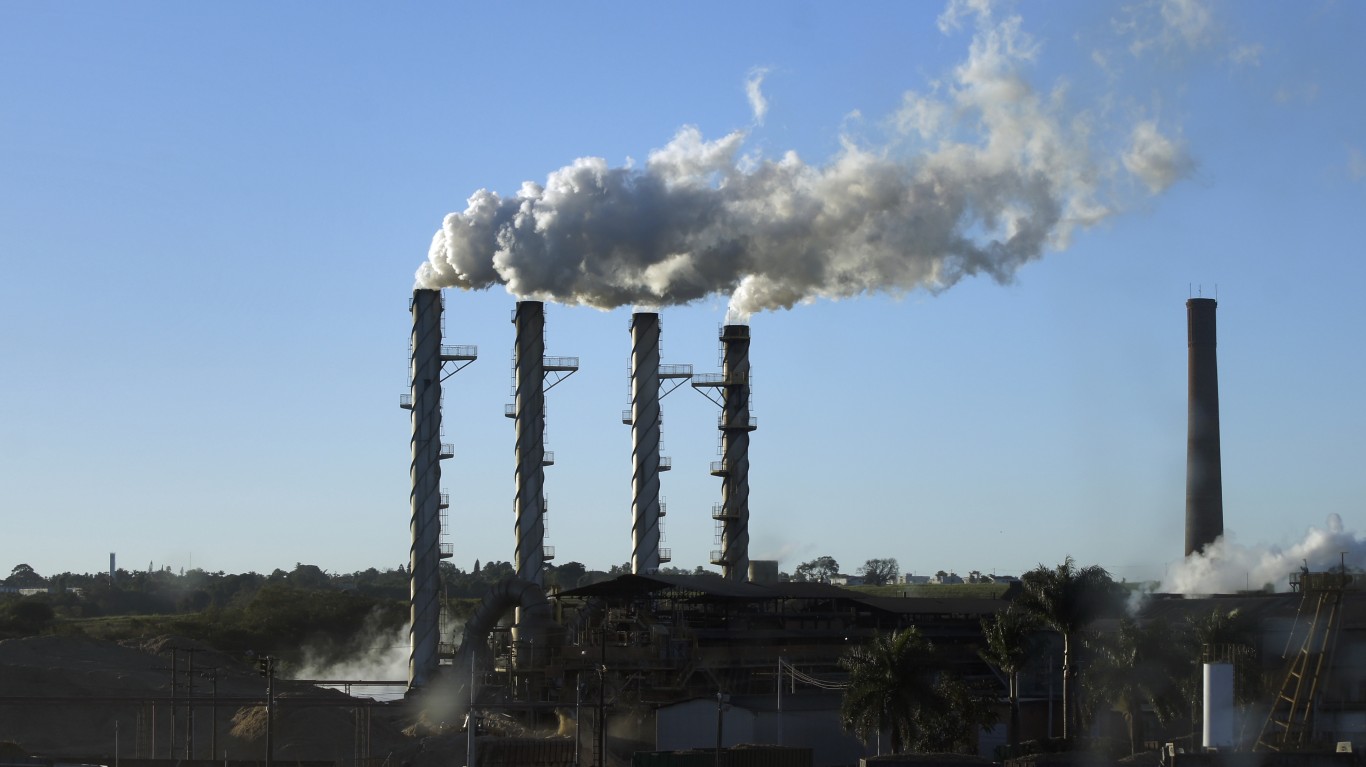
1. Brazil
> Named human rights defenders killed, 2012-2021: 342
> Most common perpetrator: Unspecified (165)
> Population: 213,993,441
Brazil, the world’s seventh-largest country by population and home to most of the massive, environmentally delicate Amazon Basin, is the world’s most dangerous place for land and environmental activism based on the number of killings from 2012 to 2021. Indigenous right activists, who often oppose environmentally destructive activities by large enterprises, are the most targeted. Perpetrators include entities with ties to large landowners, polluting industries, illegal logging, and local authorities.
The average American spends $17,274 on debit cards a year, and it’s a HUGE mistake. First, debit cards don’t have the same fraud protections as credit cards. Once your money is gone, it’s gone. But more importantly you can actually get something back from this spending every time you swipe.
Issuers are handing out wild bonuses right now. With some you can earn up to 5% back on every purchase. That’s like getting a 5% discount on everything you buy!
Our top pick is kind of hard to imagine. Not only does it pay up to 5% back, it also includes a $200 cash back reward in the first six months, a 0% intro APR, and…. $0 annual fee. It’s quite literally free money for any one that uses a card regularly. Click here to learn more!
Flywheel Publishing has partnered with CardRatings to provide coverage of credit card products. Flywheel Publishing and CardRatings may receive a commission from card issuers.
Thank you for reading! Have some feedback for us?
Contact the 24/7 Wall St. editorial team.